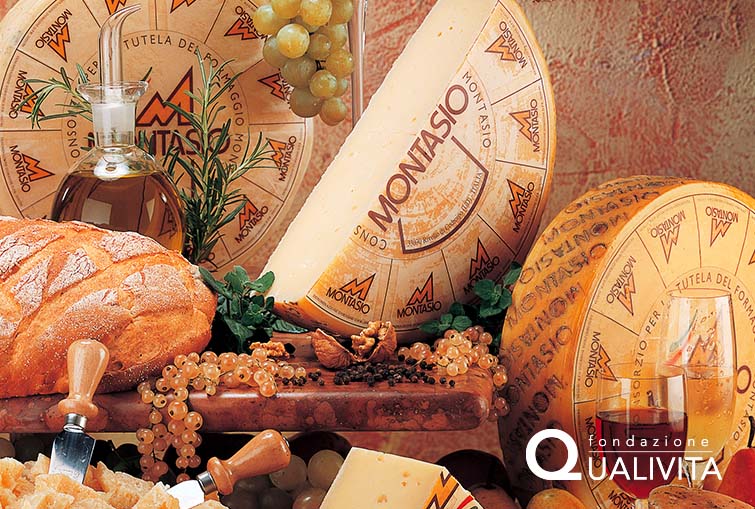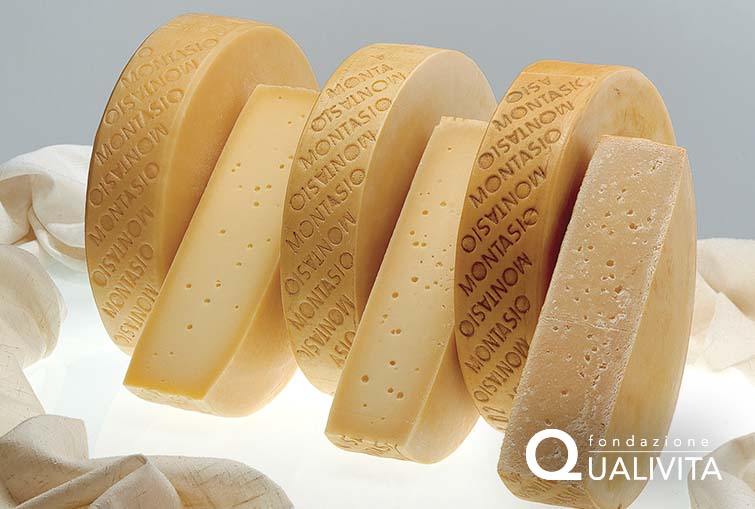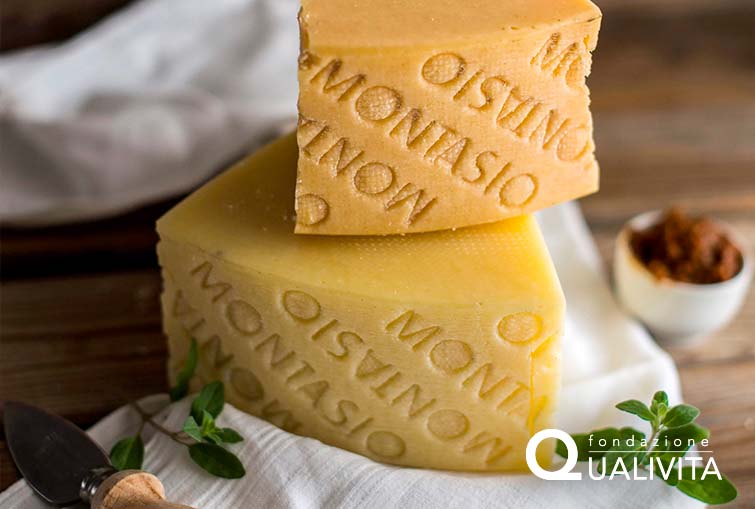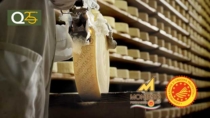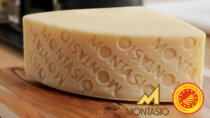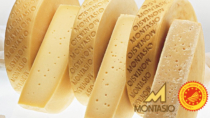Description
Montasio PDO is a cooked hard cheese made exclusively with cow’s milk. There are four typologies, depending on the length of the ripening process; Fresco (fresh), Mezzano (semi-mature), Stagionato (mature) and Stravecchio (very mature).
Production Area
The production area of Montasio PDO is within the entire territory of the region of Friuli-Venezia Giulia; the provinces of Belluno and Treviso, and parts of the provinces of Padua and Venice, in the Veneto region.
Production Method
The milk must be collected within 48 hours of the first milking and is not pasteurised. The milk is heated to a temperature of 32-34 °C and a native milk starter culture is added. It is then curdled with the addition of liquid or powdered calf rennet. Following the breaking of the curd, it is cooked until the temperature reaches 42-48 °C. The curd is then taken off the heat and broken down into smaller pieces (this stage is known as the “spinatura” and lasts for a few minutes), after which the bundles are extracted with special cloths and placed in moulds, which imprint the mark of origin and the date of production on the heel of the cheese. The moulds are then pressed to expel the whey and give the cheese its characteristic shape. The cheese is salted in brine and completed with dry salting when necessary. The minimum ripening period is 60 days and can last over 18 months, at a temperature of at least 8 °C. After at least 100 days of ripening, and following a test carried out by a special Board from the Consortium for the Protection of Montasio Cheese, the cheese can be branded with the designation logo.
Appearance and Flavour
Montasio PDO has a cylindrical shape with a flat top and bottom, and a smooth, springy rind that darkens in colour as it ripens; the cheese is straw-yellow, with a few eyes and a firm consistency that becomes grainy and crumbly over the months. Montasio PDO Fresco has a smooth, delicate and milky flavour; the Mezzano variety has a strong, full flavour; the Stagionato variety is pleasantly aromatic and flavoursome; the Stravecchio has a well-defined and particularly full flavour.
History
The origins of Montasio PDO date back to the 13th century, when the monks at Moggio Udinese Abbey perfected the cheese production techniques used by mountain farms in the Montasio mountain range. The proximity to the "Canal del Ferro" which since Roman times was an important communication and trade route, made it possible for these techniques to spread into the nearby valleys in the Julian and Carnic Alps and across the Friulian Veneto plain. The first written record dates back to 1773, in a price list from the City of Udine.
Gastronomy
Montasio PDO should be kept in the least cold compartment of the refrigerator, wrapped in a cloth. As well as being an excellent starter, it is also used for adding flavour to delicate main dishes and as an ingredient in unusual desserts. It is paired with many famous wines from the production area: Prosecco PDO, Friuli PDO, Piave PDO Raboso, Collio Goriziano PDO Ribolla Gialla, Colli Orientali del Friuli PDO Picolit and red Refosco dal Peduncolo.
Marketing
The product is marketed as: Montasio PDO Fresco (aged 2-4 months); Mezzano (aged 4-10 months); Stagionato (aged more than 10 months); Stravecchio (aged more than 18 months). When the entire production process takes place in the specified mountain area, the label may display the additional wording “Prodotto della Montagna” (Mountain Product). The whole wheel must weigh between 5.5 and 8 kg, with a diameter of 27-35 cm and the heel no higher than 8 cm.
Distinctive Features
Defined as the "cheese of common sense", thanks to its typicality and organoleptic and qualitative properties, Montasio PDO reveals a balanced and harmonious mixture of aromas and flavours, with a balanced nutritional composition. Thanks to the typical processing method, it is naturally lactose-free after 60 days.






